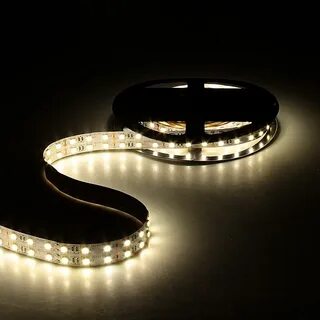
The 12v led strips are low-voltage, whereas 220V is a high-voltage electric current designed for civilian use. It can also be sai-d that the input voltage is 220V, and the voltage of operation is 12V.
It’s convenient to connect the 220V strip direct to any 220V source of power, but is not safe.
Low-voltage LED strips are more secure. If you connect it, connect a converter before the power supply is connected.
The 220V light strip has a converter with rectifier and constant current output inside. The output voltage of the rectified and filtering plug is 300V DC.
It regulates the output current by constant current conversion to 10 milliamperes DC for powering the LED light strips. The light strip with 12V power is not equipped with a power converter in it, and 12V DC power can be directly fed to the LED light strip.
LED Selection Parameters as well as 12v Direct Drive Led Strip Lights
In the beginning, let me address a question. can 12V directly power a light-emitting device in series using the help of a resistor?
The operating current for low-power LED lamp beads that come in various colors is usually 20mA but the actual value is 5 to 15mA.
In the case of low-power LEDs with red, the forward voltage drop is 1.6~2V while green ones are usually 1.8~2.4V while blue and white LEDs are 3~3.3V.
Consider that a blue light bead is drive-n by a power supply of 12V and the operating current is 9mA. Then the current limiting resistor R = (12V-3V)/9mA = 1KO. The forward voltage drop for the blue lamp is 3V.
Despite the fact that I selected an LED, it created problems for me. While the light isn’t as high as a tri-color light, I only see red,
The 3535MWAP from Nationstar Optoelectronics has been selected.
IF: is the forward current, which is referring to the current that is generated when the LED strip that is 12V is in operation. The working current of ordinary light-emitting dimmers is usually very low, between 10mA and 45mA.
Light-emitting Diodes (LEDs) are connected in series with resistors in order to shield them from voltage spikes.
LD: is a reference to wavelength.
Diets made of different materials emit different colors.
The luminescent hue of the same material is able to be changed by altering the impurities in the concentration or the composition.
The table below lists the different luminescent substances that are utilized in LEDs.
Luminous color Material used Wavelength
Red GaP with a normal red color.
Red GaAsP with high brilliance.
Super bright red GaAlAs 660
AlGaInP Super bright red, 625-640
Ordinary green GaP 565-572
High Brilliance Green AlGaInP 572
Super bright green InGaNg 505-540
Ordinary yellow GaAsP 590-610
AlGaInP Super bright yellow, 590-610
IV: light intensity
The light flux generated by an lightsource within a unit solid angle is called the light intensity of the source of light.
The unit for luminous intensity is called candela (cd) which is usually used in conjunction with millicandela (mcd).
One lumen of light emitted in a single solid angle is known as one candela. Candela is the term used to describe the amount of light that is emitted in a certain direction.
VF: forward voltage
Forward voltage is the difference in voltage between the positive electrode and the negative electrode when the forward current flowing through the LED is at a certain value. This voltage drop is represented in the form of a symbol “VF”.
The voltage forward of SMD LEDs commonly used by our company ranges from 2.0V-3.5V.
If it exceeds the normal operating voltage the diode can be broken down. If the forward voltage drops below a certain threshold (also known as the threshold value) The current is extremely low and there isn’t a single light that is emitted.
If the voltage is higher than an arbitrary level then the forward voltage rises with the voltage.
The light is not accurate because the voltage drop measured forward is only a couple of hundred volts.
View angle: perspective
The half-value angle is the angle that is formed in the graph of the intensity distribution when the intensity is half the intensity of its maximum.
As illustrated in Figure 5>.
In the image the normal direction of the LED is that of the mechanical axis, the direction of the highest brightness is the direction of the optical axis, and the angle between the mechanical axis and the optical axis changes to the deviation angle.
The size of the chip, the overall dimensions of the packaging mold strip the size of the cup reflecting the angle of the bracket, and the depth of insertion of the bracket in the mold cavity all directly affect the half value angle.
Different sizes of half-value angle can be made by selecting different materials and different sizes of packaging in accordance with the specifications of the client.
There are three categories that correspond to the luminous intensity angular distribution diagram:
High directivity, typically with pointed epoxy packaging or reflective packaging for cavities, but without adding scattering agent.
The half-value angle ranges from 5deg to 20deg or less. High-directivity light can be employed as a source local of illumination, or with a light sensor to create an automatic detection system.
A Standard type is typically employed as an indicator lightwith a half value angle between 20deg and 45deg.
The light c scattering offers a wider viewing angle as well as a half value angle between 45deg and 90deg.
